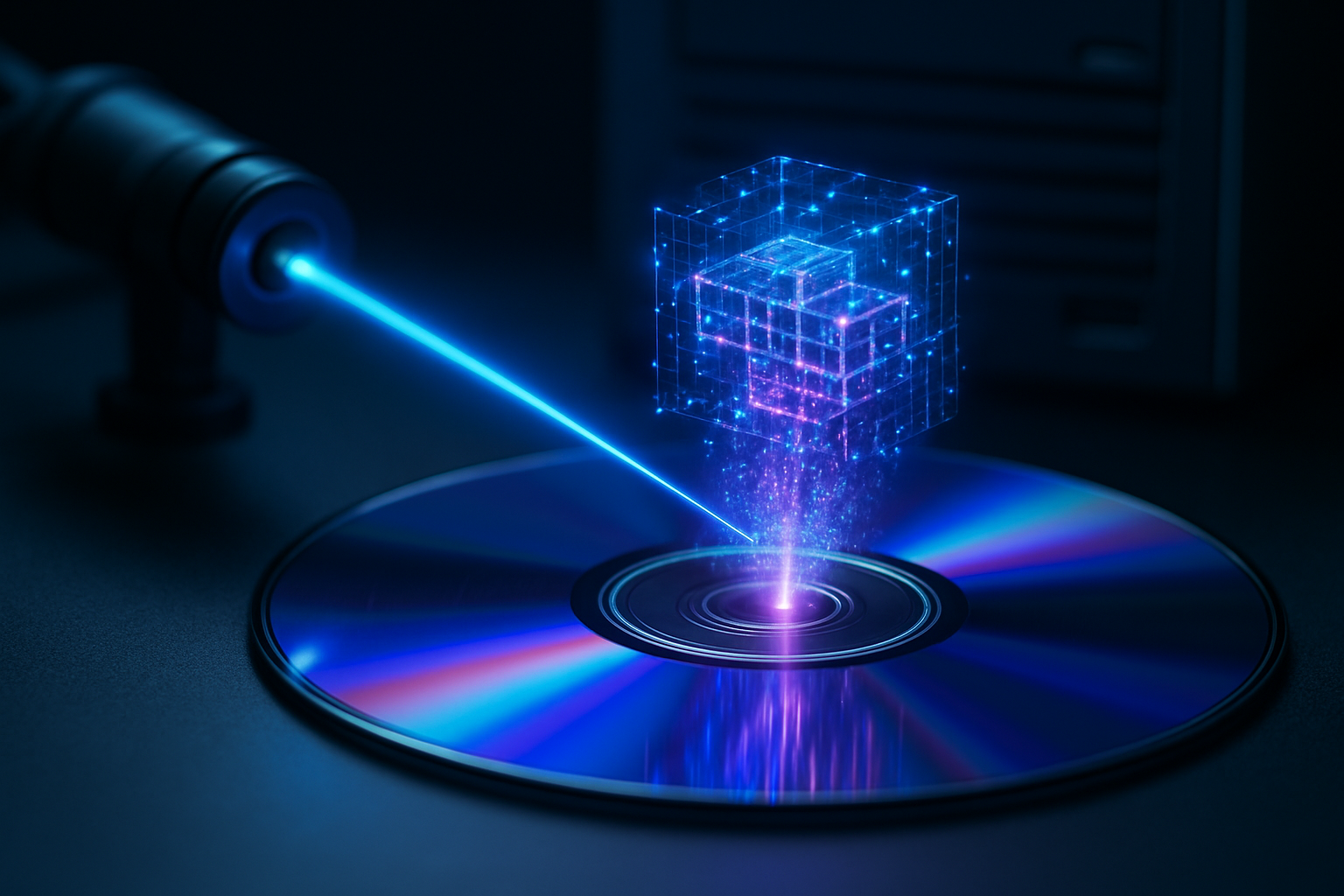Holographic Memory: The Next Frontier in Data Storage
In a world where digital data grows exponentially, the need for more efficient and high-capacity storage solutions becomes increasingly crucial. Enter holographic memory, a groundbreaking technology that promises to revolutionize data storage as we know it. This cutting-edge approach leverages the power of light to store vast amounts of information in three-dimensional space, potentially offering a quantum leap in storage density and speed.

The Science Behind Holographic Memory
At its core, holographic memory utilizes the principles of holography to store and retrieve data. Unlike traditional storage methods that write data in a linear fashion, holographic systems use lasers to create interference patterns within a photosensitive material. These patterns represent the data in a three-dimensional format, allowing for multiple layers of information to be stored within the same physical space.
The process involves splitting a laser beam into two paths: a reference beam and a signal beam. The signal beam carries the data to be stored, while the reference beam remains unchanged. When these beams intersect within the storage medium, they create an interference pattern that can be recorded as a hologram. To retrieve the data, the reference beam is shone onto the hologram, reconstructing the original signal beam and, consequently, the stored information.
Advantages Over Conventional Storage
Holographic memory offers several compelling advantages over traditional storage technologies. Perhaps the most significant is its potential for extremely high storage density. By utilizing the entire volume of the storage medium, rather than just its surface, holographic systems can theoretically store terabytes of data in a space no larger than a sugar cube.
Another key benefit is the speed at which data can be accessed. Unlike hard drives or solid-state drives that rely on sequential access, holographic memory allows for parallel data retrieval. This means entire pages of data can be read simultaneously, potentially leading to significantly faster access times and transfer rates.
Additionally, holographic storage offers improved durability and longevity. Since the data is stored throughout the entire volume of the medium, minor scratches or imperfections on the surface are less likely to result in data loss. Some estimates suggest that holographic storage could potentially last for decades without degradation.
Current State of Development
While the concept of holographic memory has been around for decades, recent advancements in materials science and laser technology have brought it closer to commercial viability. Several tech companies and research institutions are actively working on developing practical holographic storage systems.
One of the most promising developments comes from a collaboration between Microsoft and the University of Southampton. Their project, dubbed Project HSD (Holographic Storage Device), aims to create a commercially viable holographic storage system using a new type of glass developed by the university. This ultra-stable glass can potentially store data for billions of years without degradation.
Challenges and Limitations
Despite its potential, holographic memory still faces several challenges before it can become a mainstream storage solution. One of the primary hurdles is the cost of production. The specialized materials and precise optical components required for holographic systems are currently expensive to manufacture at scale.
Another challenge lies in the write speeds of holographic memory. While read speeds can be incredibly fast, writing data to a holographic medium is currently slower than traditional storage methods. Researchers are working on improving write speeds through various techniques, including parallel writing and optimized laser systems.
Future Implications and Market Potential
As holographic memory technology matures, its potential applications extend far beyond consumer electronics. Data centers, cloud storage providers, and enterprises dealing with massive amounts of data could benefit significantly from the high-density storage capabilities of holographic systems.
The market for holographic memory is still in its infancy, but analysts project significant growth in the coming years. According to a report by MarketsandMarkets, the holographic data storage market is expected to reach $4.4 billion by 2025, growing at a CAGR of 34.5% from 2020 to 2025.
While exact pricing for consumer-grade holographic storage devices remains speculative, industry experts suggest that initial products could be priced similarly to high-end solid-state drives, with costs expected to decrease as the technology becomes more widespread.
In conclusion, holographic memory represents an exciting frontier in data storage technology. As we continue to generate and consume ever-increasing amounts of data, the need for more efficient and higher-capacity storage solutions becomes paramount. While challenges remain, the potential benefits of holographic memory make it a technology worth watching closely in the coming years. As research progresses and commercial applications emerge, we may soon find ourselves on the cusp of a new era in data storage, one where the limitations of physical space no longer constrain our digital world.





